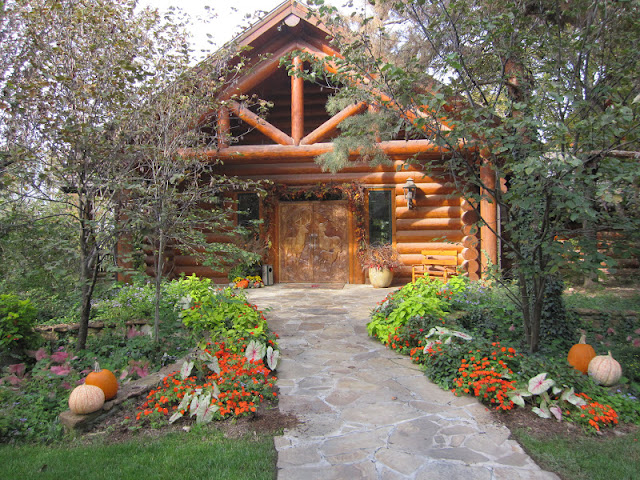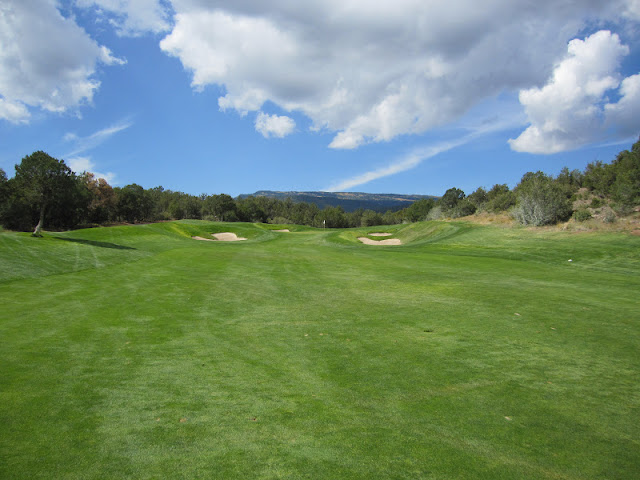The road home from New Mexico took us through Kansas. We missed visiting my sister Mary Lou during our prior trip to Kansas last March when I played golf at the Prairie Dunes Country Club in Hutchinson. Although Mary Lou lives in Topeka, we learned she spends much of her free-time on the week-ends in the Hutchinson area. She bought a house in nearby Langdon where her son, Robert, lives. You may recall my mention of Robert in an early blog titled “San Francisco Houses & Flat Stanley”. Robert lived in one of the San Francisco houses shown in the blog. I expect he underwent a huge culture shock in the move from San Francisco to rural Kansas!
The Langdon property includes a small field where Mary Lou plans to start a vineyard. That was quite surprising to me since I can never recall my sister having ever planted anything in her life. Now she is preparing to grow & care for a vineyard in the middle of Kansas (a land that is best known for endless wheat fields, not so much for vineyards). She started off her venture this past summer with a vegetable garden. Growing watermelons and pumpkins in the hot, dry Kansas summer is not something I would have thought of tackling as a first project, especially when she would only be able to water the garden on the week-ends. She proudly showed off a watermelon and a pumpkin that missed being run over after she mowed the field down at the end of the summer. She is planning to install a drip irrigation system after she plants the grape vines.
The Langdon property
Future site of Mary Lou's vineyard
You know the house is in Kansas it's adjacent tornado shelter
Proof that she can grow watermelons in Kansas
Not so much proof that she can grow pumpkins!
Mary Lou has a friend, Dave, who is a week-end wheat farmer in the area. He was planting winter wheat when we stopped by for a visit. Hopefully, she will be able to get some advice from him as she moves forward with her projects. He obviously knows what he is doing - - - exemplified by his choice in farm equipment. The John Deere 4020 tractor he was driving was one of the product lines our father, Ardis, helped design & build during his career with the company. The JD 4020 model tractor helped propel John Deere to the #1 position in agriculture over it’s long term competitor, International Harvester. The JD 4020 was in production from 1964-1972, making Dave’s tractor over 40-years old. Dave commented that he could plant all day on only 15-gallons of fuel. The tractor was in great operating condition, making it easy to understand why the JD 4020 enjoyed such a sterling reputation among customers, many of whom often requested it be brought back into production. Dave pointed out there is a web site devoted to its current fan base: forty-twenty.com.
Dave drilling winter wheat with his John Deere 4020 tractor
Mary Lou and her John Deere 755 tractor
We let Dave get back to work while we drove over to Arlington where Mary Lou was in the final stage of buying yet another property (her 4th). She intends to rent out the house until she retires and moves to the area on a permanent basis. She was attracted to the Arlington property since it contained enough room to build a cellar for her future wine production. I would not be a Herring if I did not jokingly point out that she might be crazy - - - my sister is certainly not afraid to venture down the road less traveled and we can all agree that she does indeed plan ahead! Her pursuit of organic gardening reminded me of an advertising logo I observed on the side of a street vendor’s truck in San Francisco: “Frozen custard made with fresh, natural, local, organic ingredients.” I can almost envision reading the label on one of her wine bottles already!
The Arlington property
Future site of Mary Lou's wine cellar
The warm, sunny skies made it an easy decision to play golf in Kansas before continuing the drive home. I mentioned in the last blog that my next goal was to play all of America’s 100 Greatest Public Golf Courses. I already have a good start on the goal having played 26 of them already. It has proved difficult to gain admittance to many of the private clubs included on the list of America’s 100 Greatest Golf Courses. So while the new goal is to play all of the top public courses, I do intend to chip away at the top private courses whenever the opportunity arises. Such an opportunity arose when I contacted the Flint Hills National Golf Club in Andover, a suburb of Wichita. They agreed to let me play, making it the 18th course I have played from the list of the greatest golf courses.
Round: 18/100
Location: Andover, KS
Golf Digest “America’s 100 Greatest Golf Courses” Rank: 75
Date: 30 Sep, tee off at 2:00 PM
Conditions: overcast skies, 5 MPH wind, 73 degrees
Yardage: 6,394
Lost balls: 0
Score: 74 on a par 71
The golf course at Flint Hills is in the midst of a private gated community. The fall decorations at the front gate, entrance roadway and walkway leading to the club house were vivid reminders that my season was coming to a close. They also indicated that I was in for a treat, although playing golf on a Sunday afternoon meant I would be playing alone. The majority of any members wishing to play would have played earlier in the day so they could catch the pro football games on TV in the afternoon. I was surprised to learn the club would be hosting a member-guest tournament the following day; I suspect my home course would not allow any un-accompanied guests to play the day before such a tournament. The course was in excellent condition as you might expect.
Gated entrance to Flint Hills
Fall decorations along the road to the golf course
Statues in a small pond along the roadway
Walkway to the clubhouse
Front entrance to the clubhouse
I enjoy playing a golf course that penalizes the player for a poor shot; water hazards, sand traps and long rough certainly are the types of hazards everyone tries to avoid. Hole #3 at Flint Hills added one additional element with green side sand traps cut into a steep hillside. Maintaining grass around the traps would be difficult - - - so they just let it grow. If you missed landing on the green, any ball that landed in the sand traps would be considered a blessing compared to landing in the 12” tall grass adjacent to them.
353-yard par 4 hole #3
The sand traps and long grass surrounding the hole #3 green
Hole #4 provided the more typical challenges where patches of native grass combined with a small pond to test your accuracy on the par 3 hole.
185-yard par 3 hole #4
View of hole #4 looking back over the green toward the tee box
While the views from many of the tee boxes were very indicative of the challenging shots, hole #10 provided the most scenic backdrop with a hole flanked by tall pine trees and flower beds.
514-yard par 5 hole #5
330-yard par 4 hole #6
489-yard par 5 hole #11
150-yard par 3 hole #10
View of hole #10 green
The half-way house was located along the path between the 11th and 12th holes. Flint Hills did not miss any opportunities to enhance their beautiful setting.
Statues of children raising the flag near the half-way house
 Hole #18 was a par 5 that wrapped around a small lake. After making a good tee shot, the temptation to go for the green was irresistible. I carried over the water but landed short of the green in the rough. A chip shot and 2-putt enabled me to finish with a par. It was a nice way to wrap-up a great afternoon on a beautiful, challenging golf course.
Hole #18 was a par 5 that wrapped around a small lake. After making a good tee shot, the temptation to go for the green was irresistible. I carried over the water but landed short of the green in the rough. A chip shot and 2-putt enabled me to finish with a par. It was a nice way to wrap-up a great afternoon on a beautiful, challenging golf course.
486-yard par 5 hole #18 (view from the green looking back up the fairway)
View of the clubhouse from the 18th green




















































